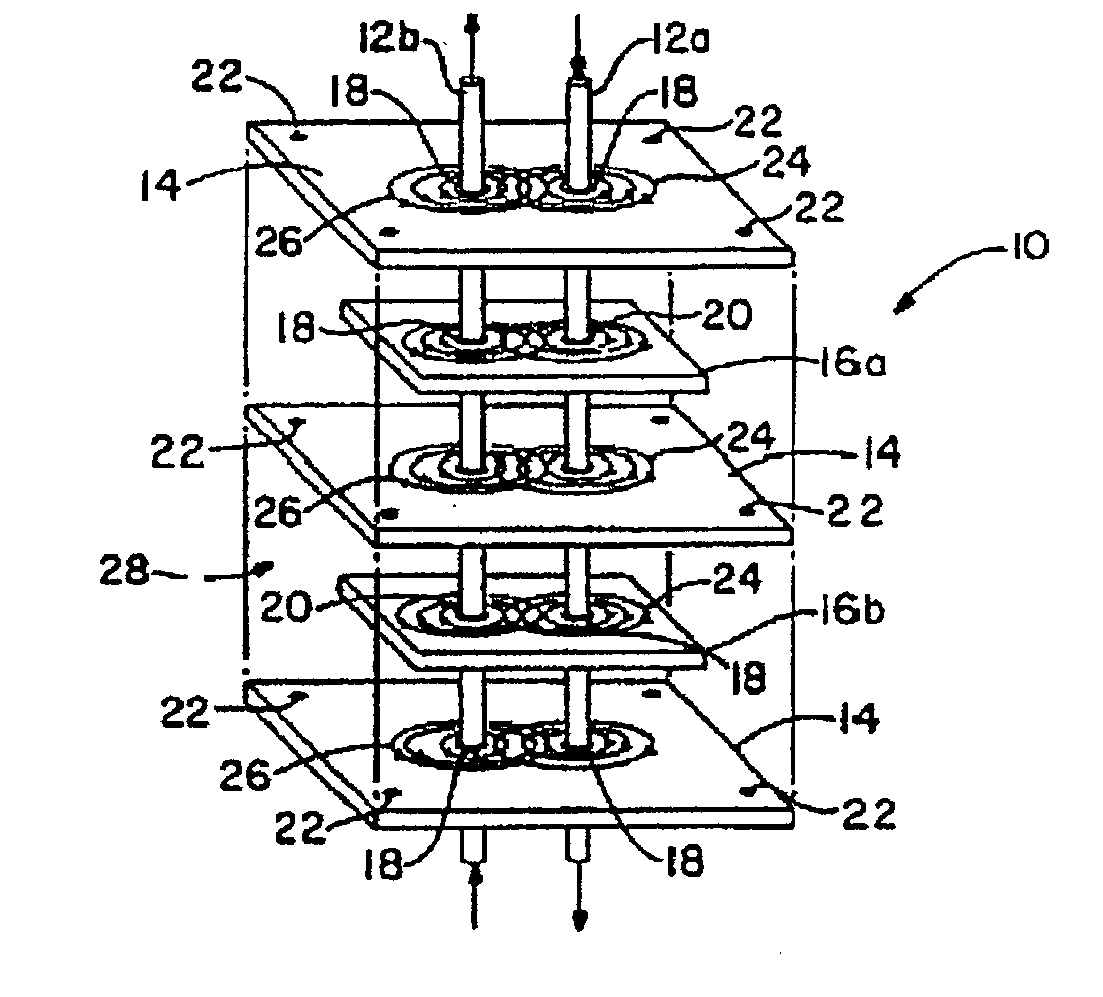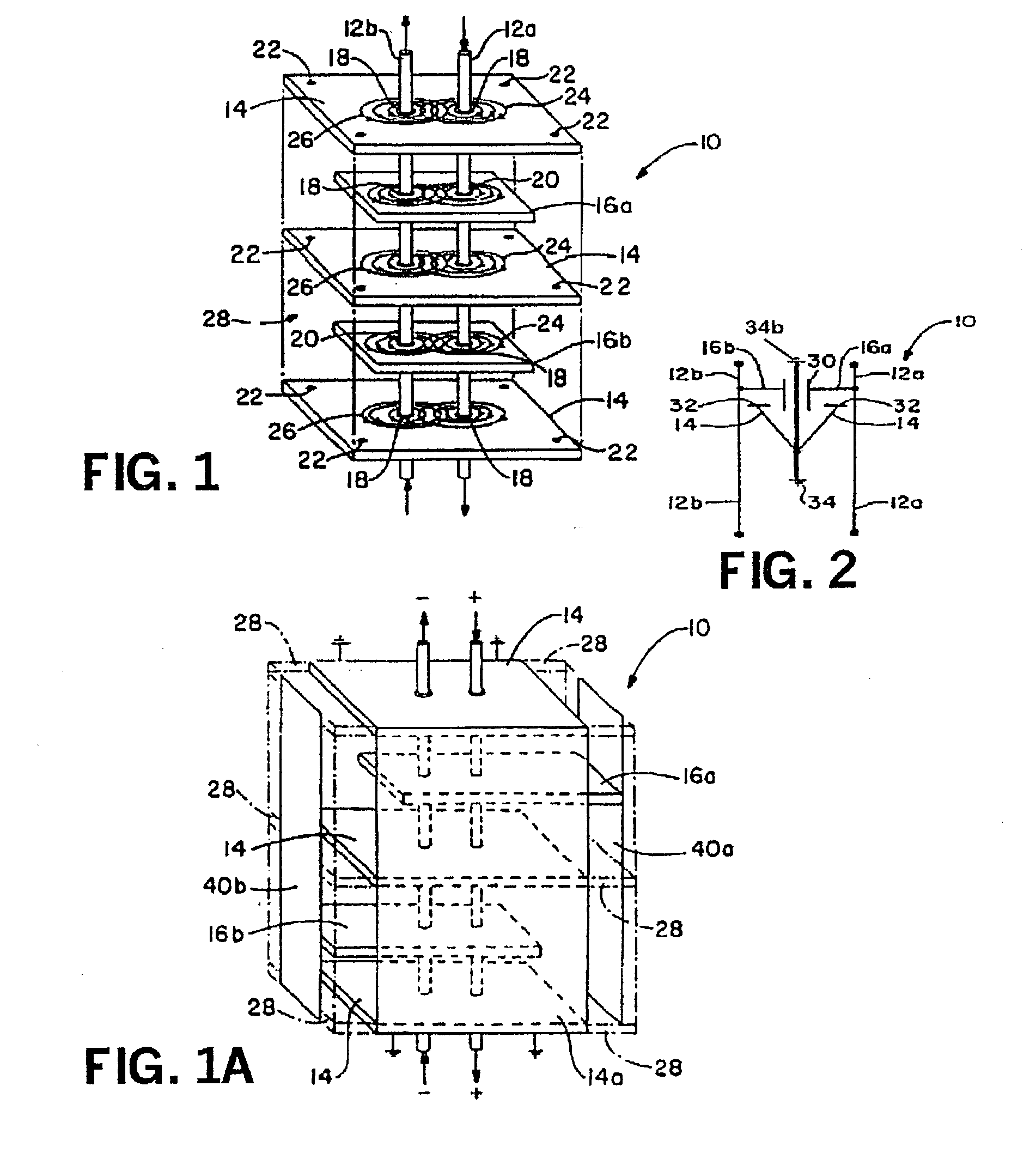Multi-functional energy conditioner
a multi-functional, energy conditioner technology, applied in the direction of feed-through capacitors, fixed capacitor details, semiconductor/solid-state device details, etc., can solve the problems of requiring extensive repair and/or replacement at a high cost, affecting the efficiency of electronic equipment, and prone to stray electrical energy, so as to prevent debilitating electromagnetic emissions, minimize or suppress unwanted electromagnetic emissions, and maintain constant apparent voltage potential
- Summary
- Abstract
- Description
- Claims
- Application Information
AI Technical Summary
Benefits of technology
Problems solved by technology
Method used
Image
Examples
Embodiment Construction
[0047] Continued and increasing use of electronics in daily life and the amount of electromagnetic interference (EMI) and emissions generated has created new electromagnetic compatibility (EMC) requirements. These new specifications apply to diverse electronic equipment such as but not limited to and in particular IC (Integrated Circuit) packages, PCBs, DSPs, microcontrollers, switch mode power supplies, networks, connectors, avionics, wireless phones, consumer electronics, tools, ordnance igniters, and control equipment. The present invention is directed towards a physical architecture for an electronic component that provides simultaneous and effective EMI suppression; line conditioning, broadband I / O-line filtering, EMI decoupling noise reduction and surge protection in one integrated component or assembly.
[0048] To propagate electromagnetic interference energy two fields are required, an electric and magnetic. Electric fields couple energy into circuits through the voltage diff...
PUM
 Login to View More
Login to View More Abstract
Description
Claims
Application Information
 Login to View More
Login to View More - R&D
- Intellectual Property
- Life Sciences
- Materials
- Tech Scout
- Unparalleled Data Quality
- Higher Quality Content
- 60% Fewer Hallucinations
Browse by: Latest US Patents, China's latest patents, Technical Efficacy Thesaurus, Application Domain, Technology Topic, Popular Technical Reports.
© 2025 PatSnap. All rights reserved.Legal|Privacy policy|Modern Slavery Act Transparency Statement|Sitemap|About US| Contact US: help@patsnap.com



